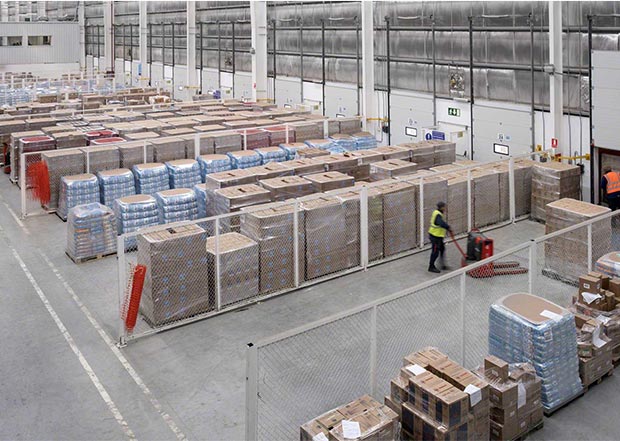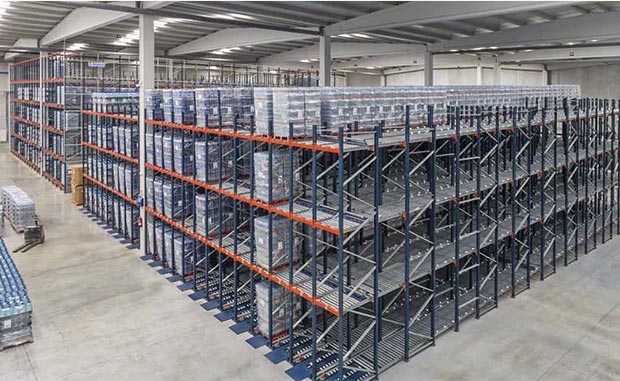Buffer storage
A storage buffer is an area allocated for the temporary storage of goods and is an area used to store materials required for subsequent processes (e.g. production, dispatching, picking or kitting). Its location and organisation can vary according to the space available and the requirements of each warehouse.
Items are placed in a specific storage system or directly on the floor for a specific period of time until they are needed. This solution is often used when product supply and demand rates are inconsistent or when the installation acts as an intermediate point between two production processes.
Applications for Buffer storage
The most widespread application of storage buffers is simply to hold goods (raw materials, packaging or semi-finished products) for the production process. This type of storage buffer is often found in installations in companies with high work rates or operating according to just-in-time methods, such as those in the automotive industry. These buffers are responsible for supplying goods at the right time in order to avoid delays that could hinder production.
Another common application of storage buffers includes sorting and organizing products in order to prepare orders and kits or which must be sent directly. In the latter case, the buffers are usually located in the warehouse dispatch area. There you can also install pre-loaded runners, where orders remain until they are ready to be loaded onto the delivery truck.

Benefits of using Buffer storage
1. Space optimization. All available space is used to accommodate more products, and the space temporarily stores all items needed during the installation process.
2. Proximity and coordination. The buffer area is perfectly coordinated and connected to other work areas that perform processes such as picking, matching and dispatching, which makes production and transport more flexible.
3. Commodity availability, storing materials required for the process in advance increases overall availability and thus prevents delays and disruptions.
4. Higher productivity, making full use of the available space and ensuring the availability of the various processes in the warehouse means increased productivity.
5. Reduced errors. In the storage buffer, products are organized in the order in which they are needed. This minimises errors and simplifies supply.
